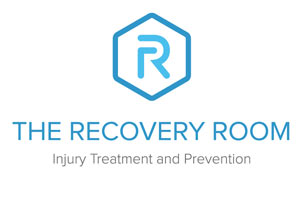The landscape of rehabilitative care offers multiple pathways to recovery, each with its own merits and downsides. Among the most popular approaches are physiotherapy and sports therapy.
While these two disciplines overlap in many aspects, they also have unique characteristics that set them apart.
At Recovery Room Sports Injury Clinic, we aim to help you understand the key differences, effectiveness, and applicability of each therapy so that you can make an informed decision.
The Core Objectives of Each Discipline:
Understanding the main goals of physiotherapy and sports therapy helps you better grasp their key differences. While both aim to improve bodily function and alleviate pain, their methods and primary focus areas differ.
What is Physiotherapy?
Physiotherapy is a healthcare profession aimed at treating a broad range of conditions that affect the musculoskeletal, cardiovascular, and nervous systems. Physiotherapists use a variety of techniques including manual therapy, exercise prescription, and electrotherapy to rehabilitate patients and improve their quality of life.
What is Sports Therapy?
Sports therapy, on the other hand, specialises in musculoskeletal disorders arising from sports and physical activities. It incorporates elements of physiotherapy but focuses more on immediate care, rehabilitation, and performance enhancement for athletes and active individuals.
Common Ailments Addressed:
Both disciplines address a range of ailments, but their specializations differ, influencing the treatment approach. Physiotherapy often deals with chronic conditions like arthritis or cardiovascular issues, while sports therapy focuses more on acute sports-related injuries such as sprains or strains.
Treatment Techniques Employed:
Here we delve into the specific methods used in each discipline, their effectiveness, and how they contribute to the recovery process.
Physiotherapy Techniques:
- Manual Therapy
- Electrotherapy
- Aerobic Exercise
- Strength Training
Sports Therapy Techniques:
- Sports Massage
- Exercise Rehabilitation
- Performance Enhancement Programs
- Immediate Care Techniques like taping
Additional Benefits of Each Discipline:
While both physiotherapy and sports therapy are widely recognized for their rehabilitative potential, they offer additional benefits that might not be immediately obvious.
Psychological Benefits in Physiotherapy:
Physiotherapy can help in improving mental well-being. Techniques such as relaxation exercises and guided movements can decrease stress and anxiety, thus improving overall mental health.
Preventive Care in Sports Therapy:
In sports therapy, preventive measures such as specific training regimes and taping techniques can help athletes avoid injuries in the first place, effectively making it a proactive approach to health and fitness.
How to Choose Between Physiotherapy and Sports Therapy:
The choice between physiotherapy and sports therapy should be guided by your specific health concerns, lifestyle, and goals.
Broad Health Concerns: If you’re dealing with issues that span multiple systems in your body—like heart problems along with back pain—physiotherapy may offer a more comprehensive treatment approach.
Sport-Specific Needs: If you’re an athlete or someone who engages in regular physical activity, sports therapy can offer specialised care tailored to your performance needs.
Conclusion by James at The Recovery Room:
In our ever-evolving understanding of human physiology, performance, and rehabilitation, the lines between different therapeutic disciplines often blur.
While this speaks volumes about the collaborative potential of these fields, it also introduces a layer of complexity when individuals are deciding on the most effective treatment pathway for their unique condition or performance goals.
Both physiotherapy and sports therapy have their individual merits and areas of specialisation. Physiotherapy, with its broader focus, provides a wide range of treatment options suitable for various conditions affecting multiple systems in the body.
Whether you are recovering from surgery, managing chronic conditions, or optimizing your physical capabilities, physiotherapy offers a well-rounded approach.
Sports therapy, meanwhile, is like a specialized soldier in the vast army of healthcare.
Tailored to handle the rigors and demands of the sports world, this discipline focuses on prevention, immediate care, and rehabilitation of sports-related injuries.
It is highly dynamic, constantly adapting to the new research and technologies that emerge in the fields of sports science and medicine.
So, what does all this mean for you, whether you’re a high-performing athlete, a weekend warrior, or someone looking to improve general health? In essence, the choice between physiotherapy and sports therapy should be contextual.
If your concerns are broad and encompass a variety of physical systems or chronic conditions, physiotherapy is often the better choice. Conversely, if your needs are more specific, particularly related to sports or physical activities, sports therapy will likely provide more targeted, effective treatment.
Consider this as well: Why not both?
Many athletes and individuals concerned with optimal performance and recovery often engage services from both disciplines.
A physiotherapist can help set a solid foundation of general health, while a sports therapist can further optimize performance and assist with sports-specific recovery and injury prevention. It’s a symbiotic relationship that yields comprehensive benefits.
It’s always advisable to consult professionals in either field to get a thorough understanding of your condition and potential treatment plans
Here at The Recovery Room, we can offer both physiotherapy and sports therapy services. We take pride in our multi-disciplinary approach, equipped with the latest technology and guided by the most recent research. We understand that every individual is unique, and so should be their treatment plan.
In closing, there’s no one-size-fits-all answer. The best treatment for you will depend on a myriad of factors: your specific condition, your treatment goals, your lifestyle, and even your personal preferences in treatment modality. Armed with the right information and guided by qualified professionals, you can make the best choice for your health and well-being.
If you have any more questions or need further guidance, don’t hesitate to reach out to us at The Recovery Room. Your path to optimal health and performance is just a consultation away.




